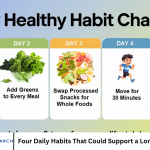A widespread cucumber recall is sweeping across the United States, prompted by a growing salmonella outbreak that has already impacted dozens of people in multiple states. Major retailers, including Target and several others, are urgently removing fresh cucumber products from their shelves to protect public health. This unfolding recall has put food safety under the microscope once again, raising concerns about supply chain oversight, agricultural practices, and consumer trust in produce quality. This comprehensive article explores the background of the outbreak, the details of the recall, the involved brands and stores, the science behind salmonella, consumer reactions, and what this means for food safety moving forward.
The Origin of the Outbreak
Initial Reports and Early Investigations
The salmonella outbreak began making headlines when health departments across several states started reporting a spike in cases involving gastrointestinal symptoms typically associated with salmonella infections. Symptoms included diarrhea, fever, nausea, abdominal cramps, and vomiting. Health officials initially found the cases scattered and seemingly unconnected until a shared link emerged: the consumption of fresh cucumbers within a certain timeframe.
CDC and FDA Involvement
Once the link between the salmonella cases and cucumbers became clearer, the Centers for Disease Control and Prevention (CDC) and the U.S. Food and Drug Administration (FDA) launched a full-scale investigation. Traceback studies helped identify a specific distribution network and farm sources in certain regions of the country. Lab testing on cucumber samples confirmed the presence of Salmonella Africana, a rarer but still dangerous strain of the bacteria.
Scope of the Recall
Recalled Products
The cucumber recall affects both whole and pre-cut cucumbers sold in various forms—packaged, loose, organic, and conventional. These products were sold in retail chains including but not limited to:
- Target
- Walmart
- Kroger
- Aldi
- Trader Joe’s
- Safeway
- Publix
The recall mainly involves cucumbers distributed between May 15 and May 28, although further extensions to the recall are expected as the investigation continues.
Geographical Reach
The outbreak has reached over 25 states, including California, Texas, Florida, New York, Illinois, and Ohio. Given the widespread national distribution of the affected cucumbers, it’s likely that more states will be added to the list in the coming days.
Voluntary and Mandatory Recalls
Some companies voluntarily pulled cucumber products from their shelves even before receiving official instructions. Others acted only after FDA advisories were issued. Regardless, the industry response has been swift in attempting to contain the outbreak.
Major Retailers Affected
Target’s Response
Target has been one of the most visible companies affected by the recall. In a public statement, Target announced that it had pulled all possibly contaminated cucumbers from its produce sections and distribution centers.
“The health and safety of our guests is our top priority,” a Target spokesperson said. “We are cooperating fully with authorities and encourage guests to discard any cucumbers purchased during the affected timeframe.”
Target has also begun issuing refunds to customers who can show proof of purchase, even if the cucumbers have already been discarded.
Other Retail Chains
Walmart
Walmart issued a similar recall, pulling products from more than 3,000 stores nationwide. The company activated its internal recall protocols and also began contacting customers through its app and loyalty programs.
Kroger and Affiliates
Kroger, which operates numerous supermarket chains under various names (Ralphs, Fred Meyer, Fry’s), also announced a recall, warning customers through email alerts, social media, and in-store signage.
Aldi and Trader Joe’s
These chains, known for their streamlined inventory, quickly identified and removed the problematic cucumbers. Aldi, in particular, took additional precautions by removing similar produce items that might have come into contact with the cucumbers during packaging.
Understanding Salmonella
What Is Salmonella?
Salmonella is a group of bacteria that can cause foodborne illness. The strain linked to this outbreak, Salmonella Africana, is known for causing severe illness, especially in young children, the elderly, and immunocompromised individuals.
Symptoms and Severity
Salmonella infections usually develop 6 to 72 hours after consumption of contaminated food. Symptoms include:
- Fever
- Diarrhea (sometimes bloody)
- Abdominal cramps
- Nausea
- Vomiting
- Headache
While most people recover without medical treatment, severe cases can lead to hospitalization or even death.
How Cucumbers Become Contaminated
Contamination can occur at any point in the supply chain—from the fields where cucumbers are grown to the distribution centers and retail shelves. Possible contamination points include:
- Irrigation with contaminated water
- Contact with animal feces in fields
- Unsanitary processing facilities
- Cross-contamination during shipping
Government and Health Authority Actions
FDA Traceback Operations
The FDA’s traceback operation utilized purchase receipts, supplier invoices, and distribution records to identify the origin of the contaminated cucumbers. Several farms in California and Mexico have come under scrutiny.
CDC Public Alerts
The CDC has issued public health advisories and updated its food safety guidance. Consumers are encouraged to:
- Check purchase dates
- Dispose of any cucumbers bought during the recall window
- Clean any surfaces that may have come into contact with the cucumbers
- Watch for symptoms if cucumbers were consumed
Consumer Impact
Public Reactions
On social media, many consumers expressed concern and frustration:
“I just bought a cucumber pack from Target two days ago for my kids’ lunches. Now I’m terrified!” — Twitter user @HealthyMama
“I’ve had stomach issues all week. Didn’t think a cucumber could be the culprit!” — Facebook commenter
This emotional response reflects how deeply food safety incidents can shake consumer trust.
Economic Ramifications
Beyond public health, the economic cost of the outbreak is likely to be significant:
- Retail losses from discarded inventory
- Supplier liability
- Legal actions by affected consumers
- Hospitalization costs for those infected
Lessons in Food Safety
Transparency in the Supply Chain
This cucumber recall has renewed the call for greater transparency in the produce supply chain. Consumers and watchdog organizations are urging for:
- Improved farm-to-table traceability
- Better sanitation protocols
- Regular microbial testing
Retailer Responsibility
Retailers are now under increasing pressure to ensure that they source their products from certified, inspected suppliers. Many are revisiting their food safety certifications and audit requirements.
Government Policy Changes
This outbreak may lead to strengthened federal regulations. Proposals already circulating include:
- Mandatory microbial testing for high-risk produce
- Faster recall communication systems
- Expanded powers for the FDA to enforce recalls
Historical Precedents
This isn’t the first time cucumbers have been involved in a recall due to salmonella. A similar outbreak in 2015 resulted in:
- Over 900 reported illnesses
- 204 hospitalizations
- 6 deaths
Back then, cucumbers from Mexico were blamed, and the FDA imposed stricter inspection criteria on imports. That outbreak had a long tail of public distrust that took years to repair.
What Consumers Should Do
Checking Your Cucumbers
If you have cucumbers in your fridge and are unsure of their source, it’s safest to discard them. Signs they may be part of the recalled batch include:
- Labels from specific farms or distributors named in the recall
- Purchase dates between May 15 and May 28
- Product codes listed on the FDA’s recall notice
Cleaning and Prevention
Because salmonella can linger on surfaces, be sure to:
- Wash your hands after handling cucumbers
- Sanitize cutting boards, knives, and countertops
- Rinse other produce that may have been stored nearby
Legal and Corporate Consequences
Potential Lawsuits
Food poisoning lawsuits have become increasingly common, especially when hospitalizations occur. In this case, legal experts suggest that class-action lawsuits may be filed against growers and distributors if negligence can be proven.
Corporate Response
Companies linked to the outbreak are conducting internal investigations and may face heavy fines. Stock prices for affected growers and some distributors have already seen minor fluctuations as investors brace for liability costs.
The Road Ahead
Rebuilding Consumer Confidence
The key challenge now is rebuilding public trust. Companies and agencies involved will need to:
- Be transparent with findings
- Offer regular updates
- Provide compensation or refunds to affected customers
Technological Aids
Emerging technologies, like blockchain and AI-powered supply chain monitoring, may play a role in preventing similar outbreaks. These systems can trace the origin of produce in real time and help flag contamination earlier.
Frequently Asked Question
Why were cucumbers recalled?
The cucumbers were recalled due to contamination with Salmonella Africana, a dangerous bacterium that causes foodborne illness. The contaminated products were distributed across the U.S. between mid and late May.
Which stores are affected by the cucumber recall?
Several major retailers have removed affected cucumbers from their shelves, including Target, Walmart, Kroger and its affiliates, Aldi, Trader Joe’s, Safeway, and Publix. Additional stores may be added as investigations continue.
What states have reported salmonella cases linked to cucumbers?
States reporting cases so far include California, Texas, Florida, New York, Illinois, Ohio, and more than 20 others. The outbreak is still evolving, so the list is likely to grow.
What are the symptoms of salmonella infection?
Symptoms typically include diarrhea, fever, nausea, vomiting, stomach cramps, and headache. These usually appear within several hours to a few days after consuming contaminated food.
What should I do if I have cucumbers at home?
If you bought cucumbers during the affected dates from a store on the recall list, it’s best to throw them away. Sanitize any surfaces they touched and wash your hands thoroughly after handling them.
Can I get a refund for recalled cucumbers?
Yes. Many stores like Target and Walmart are offering refunds, even without the physical product. Keep your receipt or proof of purchase to request a refund.
How did cucumbers become contaminated with salmonella?
Contamination may have occurred through dirty irrigation water, contact with animal waste in the field, poor sanitation during processing, or cross-contamination during shipping.
How is the government responding?
The FDA and CDC are tracing the supply chain, testing samples, issuing public warnings, and working with farms and distributors to find the contamination source and prevent further spread.
How long will the recall last?
The recall will remain in effect until all contaminated products are identified and removed, and no new illnesses are reported. This process can take several weeks.
What should I do if I think I got sick from eating cucumbers?
Seek medical attention if you’re experiencing symptoms. Inform your doctor about the potential exposure and consider reporting your illness to your local health department.
Are organic cucumbers affected?
Yes, some organic cucumber batches have been included in the recall. Check the FDA’s official recall list or consult your retailer for specific product details.
Conclusion
The widening cucumber recall linked to salmonella contamination has underscored the vulnerabilities in our food supply chain. While major retailers like Target have acted quickly to pull products and protect consumers, the scope of the outbreak—and the speed at which it spread—has raised urgent questions about agricultural practices, distribution oversight, and government preparedness.






